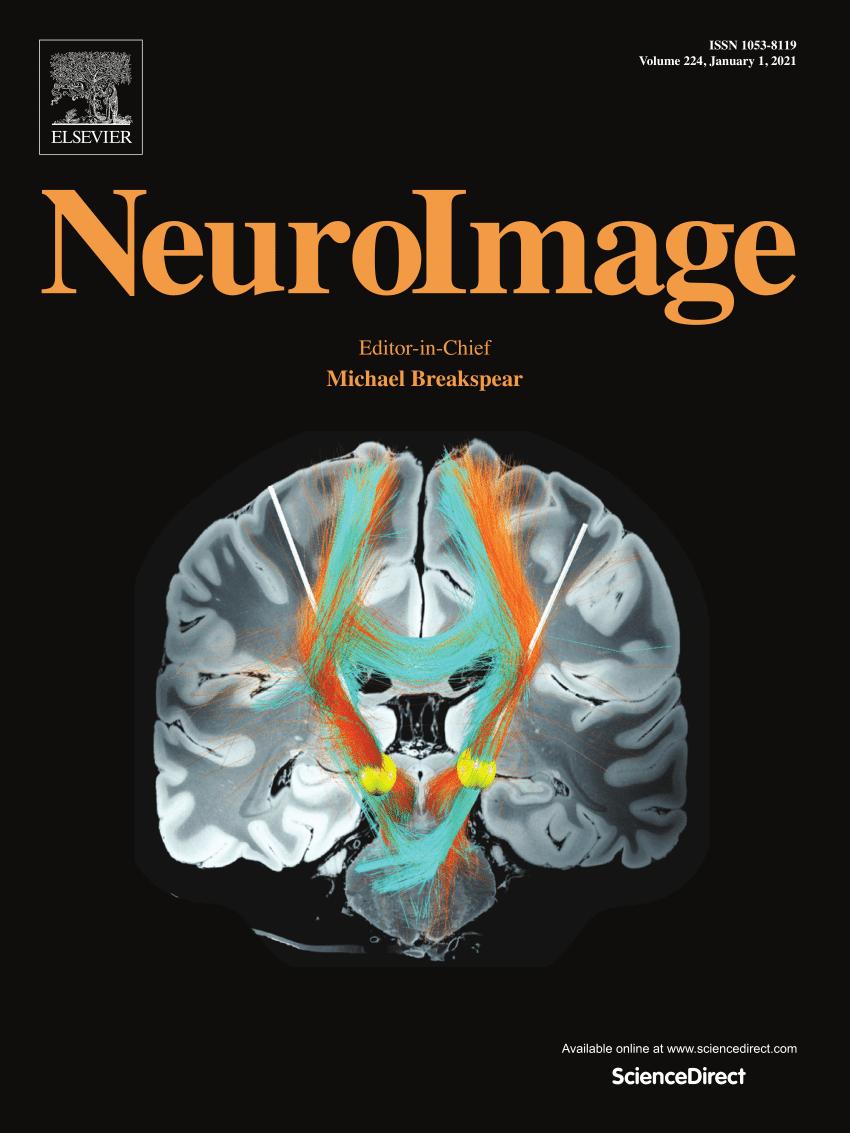揭示选择性听觉注意在erp中的作用:从脑干到皮层。
IF 4.5
2区 医学
Q1 NEUROIMAGING
引用次数: 0
摘要
五十多年前,有报道称,选择性地关注两个二元呈现的音调序列之一,增强了皮层事件相关电位(ERP)的主要N1成分。本研究重现了这一经典实验,但用调频的“啁啾”取代了一只耳朵的音调,这种“啁啾”旨在同时激活整个耳蜗,从而在听觉脑干通路中引发强大的erp。参与者每次有选择地听一只耳朵的声音,任务是报告偶尔出现的低强度目标。当听到啁啾时,它们在听觉通路的多个层面(0-250ms)引发了增强的erp,包括下丘水平的脑干反应。这些结果有助于解决一个长期存在的问题,即选择性注意是否对脑干通路中竞争性听觉输入的初始传递施加自上而下的控制。本文章由计算机程序翻译,如有差异,请以英文原文为准。

Unraveling the effects of selective auditory attention in ERPs: From the brainstem to the cortex
A little over fifty years ago, it was reported that selectively attending to one of two dichotically presented tone sequences enhances the major N1 component of the cortical event-related potential (ERP) to the attended tones. The present study revisited this classic experiment but replaced the tones in one ear with frequency-modulated “chirps” that were designed to activate the entire cochlea simultaneously and thereby elicit robust ERPs in the auditory brainstem pathways. Participants attended selectively to the sounds in one ear at a time with the task of reporting occasional targets of lower intensity. When chirps were attended, they elicited enhanced ERPs at multiple levels of the auditory pathways (0–), including a brainstem response at the level of the inferior colliculus. These results help to resolve a long-standing question of whether selective attention exerts top-down control over the initial transmission of competing auditory inputs in the brainstem pathways.
求助全文
通过发布文献求助,成功后即可免费获取论文全文。
去求助
来源期刊

NeuroImage
医学-核医学
CiteScore
11.30
自引率
10.50%
发文量
809
审稿时长
63 days
期刊介绍:
NeuroImage, a Journal of Brain Function provides a vehicle for communicating important advances in acquiring, analyzing, and modelling neuroimaging data and in applying these techniques to the study of structure-function and brain-behavior relationships. Though the emphasis is on the macroscopic level of human brain organization, meso-and microscopic neuroimaging across all species will be considered if informative for understanding the aforementioned relationships.
 求助内容:
求助内容: 应助结果提醒方式:
应助结果提醒方式:


